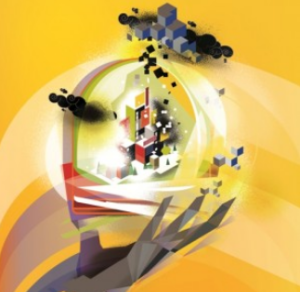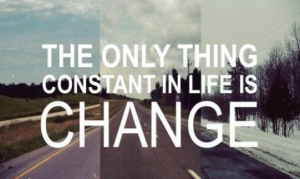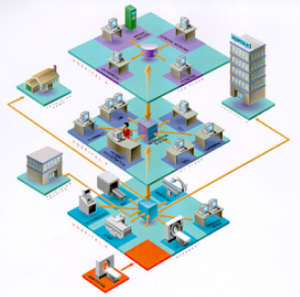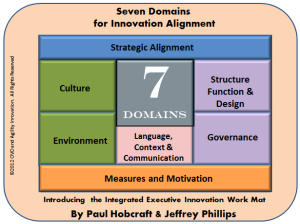 The issue of “where does innovation fit?” is one of the most difficult ones to address in many organizations. It seems to fit uncomfortably for many.
The issue of “where does innovation fit?” is one of the most difficult ones to address in many organizations. It seems to fit uncomfortably for many.
At the top of our organizations they ‘require’ innovation but will often not want the potential disruption this might entail.
Yet the organization today is being challenged like never before, it has gone from managing the predictable business to responding to the unpredictable, more opportunistic and alert to change, a place innovation can fit within the need to respond to this different environment.
This is the final post in the series that has focused on the innovation work mat components
Within this final post, I look at why innovation needs to align into the organization. Innovation seems to be in conflict and tension within so much within our organizations. Innovation is challenging the established order; today’s world is also demanding a new organizational design.
The Executive Innovation Work Mat offers a framework to gain a higher level of strategic focus around innovation. Innovation requires engagement throughout the organization to deliver in today’s tougher, more challenging world.
In this series of articles I have looked at the seven components to raise questions, to probe and prompt the necessary thinking that needs to be made in organizations around building innovation that sustains and delivers to the strategic need.
Adjusting our innovation systems to the changes happening all around us

I certainly believe there is an awful amount of change occurring around innovation.
Organizations are attempting to integrate innovation far more into their existing practices.
I think many of these attempts will fail. Existing practices often are not innovation-friendly!
The old organization model built on efficiency and effectiveness, operating in predictable conditions is being destroyed, we are in the world of the disruptor. Innovation needs to be more central to organization design to counter this challenge. Innovation thrives well in networks, it gains from ‘being connected’
Innovation is at the core of a new battle for securing an organizations future, in its relevancy and importance, yet our organizations continue to struggle with where to box this.
If innovation stays a side-show the organization faces a slow demise, as it hangs on grimly, determined to continue to work in ways it has become comfortable with.
Those ‘old’ ways that values controlling in prescribed hierarchies and through rigid plans are simply struggling in today’s more connected world.
We are in uncomfortable times where past systems and structures are not fit for purpose. What is valued more today is “guiding coalitions” where iterations and co-creating thrive.
Strategy and execution are highly interrelated and it is the power of a connected network, working on common cause within innovation that can generate powerful results. ‘Connected’ and ‘collected’ intelligence gives us fresh capacity and far more promising futures.
Innovation is operating in this growing organization world of the designers’ dilemma.
 The middle of our organizations continues to focus upon constantly looking to achieve efficiencies and effectiveness to deliver that more predictable result that the top really prefers.
The middle of our organizations continues to focus upon constantly looking to achieve efficiencies and effectiveness to deliver that more predictable result that the top really prefers.
Much of middle management is working with yesterday’s tools and techniques. Innovation is caught up in this middle kingdom and continues to be in conflict. This needs changing.
The innovator themselves, those beginning to roam around the organization, are seeking to disrupt, to challenge, to alter the established pattern as their remit is to bring new innovations into the world. They often face considerable resistance from so many antibodies to this new way of managing.
Organizations have to face this constant ‘tension’ around innovation and where it fits in design, function and structure. Innovation is today not the most comfortable space to work within in our organizations. It often seems to ‘rub’ up against much that seems immovable, innovation generates often unwanted heat and conflict.
Yet innovation is essential, it ‘must’ reside, so we need to manage this ‘creative’ tension to achieve real value out of innovation, results that have lasting impact.
Moving through this disruptive and tense world calls for a more radical response.
 Organizations want to see well-defined processes and coordination happening across the functions undertaking the activities of innovation.
Organizations want to see well-defined processes and coordination happening across the functions undertaking the activities of innovation.
It wants innovation to fit within existing organizational design.
This struggle that innovation has with this ‘need to fit’ is a tough challenge. The resolution requires senior management attention to work this thoughtfully through.
It is through this designing of all the essential parts that make up innovation, that will give it the functioning fit for ‘innovation purpose’ but this takes time, engagement and dedicated energy. It needs integrating and coordinate throughout the whole organization.
Innovation is certainly no different from other functions specializing, it does need to be well-designed into the organization but it needs carefully managing, piloting through the organization and that attention to its needs has to come from the top, as it can challenge many established practices that need resolution.
Innovation requires a well-designed system, this is where risk can be managed and defined. This requires having in place a well-designed innovation framework that accounts for and builds around all that good innovation needs.
Designing an integrated innovation system that can ‘pilot’ the activities safely is critical. Organizations will not permit undue risk unless they are in desperate situations where radical actions need to come into play, regretfully these are often too little too late.
How do we design innovation into our organizations systems?

Innovation over time will become more of the core of an organization.
To do this it needs to be well-defined, fully resourced and valued.
It constantly needs to demonstrate value creation.
Organizations need to set about building distinct set of capabilities that deliver on the essentials to provide the future health of the organization.
Innovation offers ‘much needed’ fresh oxygen that allows an organization to thrive and grow. If it starves the organization of this oxygen not only innovation dies but over time so does the organization and it will die.
Innovation must fit somehow into an organizations thinking, find a way to be worked into the routines and practices to do its job of creating the growth, the advancement in new products, services and business models to compete effectively with others to attract the customer to buy.
It needs to balance risk and opportunity; to deliver both efficient and effective results, be highly visible, organized and able to deliver on its future promise.
The design of the organization’s innovation engine room is the place for managing future growth. It needs examining and managing carefully.
As the current organisational tensions are being navigated through with new organisational designs emerge, Innovation has the potential within its possible design and management that could significantly contribute to this new emerging organization order.
Every organization has some clarity in their design, function and their innovation process yet it is constantly constrained by these tensions within organizations. Today there is a need for a new architecture of design for our business as outlined here, a post relating to designing new business models.
The call is for a well-designed innovation framework.
Within this series around the Executive Innovation Work Mat, we covered the different components that make up this work mat. The overarching aim of the work mat is to address one of the missing links we face in innovation today.
We need to achieve a clear alignment and engagement on innovation with the top through to the bottom of our organizations, where a strategic innovation document or framework lays out the integrated thinking for innovation and its contribution to the strategic needs of the organization. This can provide a clarity and purpose to unite behind.
This intent is determined by aligning innovation with the strategic needs and business outlook from the Chief Executive downwards.
In conclusion to the innovation work mat series.
In my view organization engagement comes from adopting a framework that prompts identification.
By working with an integrative innovation work mat it outlines innovations critical aspects to be worked through across the organization, to gain this greater alignment to the strategic intent of the business.

Any design and engagement needs to be highly dynamic, where the learning taking place will flow throughout the organization, top-down, and bottom-up, to make innovation alive and all connected.
This endeavour starts creating a thriving innovation ecosystem. One that is fuelled by energy and organisational commitment as all can see the connected parts and their contribution to this.
Can the Executive Innovation Work Mat be the catalyst needed? I think so.
5 thoughts on “Organizations are in a constant dilemma of the innovation fit.”
Comments are closed.